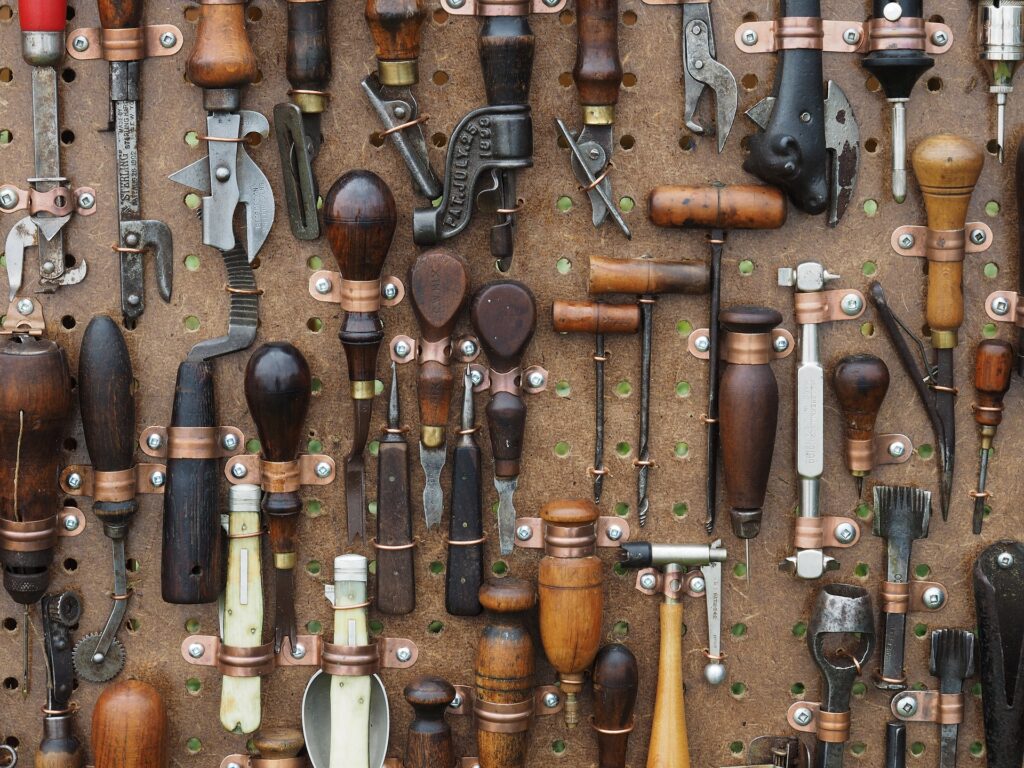Hand tools
11 Essential Hand Tools For DIY Beginners

As you gather your toolkit, remember that the right tools can make all the difference in your projects’ success.
For every aspiring DIY enthusiast or homeowner, getting started with projects around the house or in your workshop can be an exciting venture. One of the essential aspects of any toolkit is a collection of hand tools. These versatile tools allow you to complete a wide range of tasks, from simple repairs to more complex projects. In this beginner’s guide, we’ll introduce you to some of the fundamental hand tools you should consider having in your toolkit, along with their uses and tips on how to use them effectively.
1. Claw Hammer
The claw hammer is a classic hand tool recognized by its flat head and curved claw on the opposite side. It’s a versatile tool used for a variety of tasks:
Driving and removing nails: The flat head is perfect for driving nails into wood, while the curved claw allows you to remove nails efficiently.
Tip: Use the curved claw to lever and remove nails gently to avoid damaging the workpiece.
2. Screwdrivers
Screwdrivers come in various types, but the two most common are flat-head and Phillips-head screwdrivers. They are indispensable for tasks that involve fastening or unfastening screws:
Flat-head screwdriver: Ideal for slotted screws, which have a single horizontal groove.
Phillips-head screwdriver: Designed for Phillips screws, which have a cross-shaped indentation.
Tip: Match the size of your screwdriver to the size of the screw for a secure fit and less chance of stripping the screw head.
3. Adjustable Wrench
Also known as a crescent wrench, an adjustable wrench is an essential tool for loosening or tightening nuts and bolts of various sizes:
Versatile sizing: The adjustable jaw allows you to work with a range of fastener sizes.
Tip: Ensure the wrench is adjusted snugly around the fastener to avoid slipping and damaging it.
4. Pliers
Pliers are indispensable when you need to grip, bend, or cut wires, cables, or small objects:
Needle-nose pliers: Perfect for reaching tight spaces and precise gripping.
Slip-joint pliers: Offer adjustable jaw settings for gripping different sizes of objects.
Wire cutters: Designed for cutting wires and cables cleanly.
Tip: Choose pliers with comfortable, non-slip handles for better control and reduced hand fatigue.
5. Utility Knife
A utility knife, also known as a box cutter or craft knife, is handy for cutting materials such as cardboard, plastic, and packaging:
Replaceable blades: Many utility knives feature replaceable blades for convenience.
Safety features: Ensure the knife has safety mechanisms to retract or lock the blade when not in use.
Tip: Always cut away from your body and exercise caution to avoid accidents.
6. Tape Measure
Accurate measurements are crucial for any DIY project. A tape measure helps you measure lengths, widths, and heights:
Locking mechanism: Look for a tape measure with a reliable locking mechanism to keep the tape in place while measuring.
Metric and imperial units: Some tape measures display both metric and imperial units for versatility.
Tip: Measure twice to ensure accuracy before making any cuts or adjustments.
7. Level
A level is essential for ensuring that surfaces are plumb (vertical) or level (horizontal). It helps you hang pictures, shelves, or fixtures evenly:
Bubble levels: Some levels feature a bubble in a liquid-filled vial that indicates when a surface is level or plumb.
Tip: Always check the level before and after making adjustments to confirm accuracy.
8. Allen Wrench Set
Allen wrenches, also known as hex keys, are essential for assembling furniture, bikes, and other items with hexagonal socket screws:
Variety of sizes: A set typically includes several sizes to accommodate different screw types.
Tip: Keep your Allen wrenches organized to easily find the right size when needed.
9. Chisels
Chisels are sharp, flat-edged tools used for shaping, carving, and cutting wood:
Woodworking chisels: Designed for precision work on wood surfaces.
Masonry chisels: Used for tasks involving concrete or stone.
Tip: Maintain sharp chisel edges for cleaner cuts and safer use.
10. Hand Saw
A hand saw is a versatile cutting tool for various materials, including wood, plastic, and metal:
Crosscut saw: Designed for cutting across the grain of wood.
Rip saw: Ideal for cutting along the grain.
Tip: Choose the right type of hand saw for your specific cutting needs.
11. Safety Gear
Safety should always be a priority when working with hand tools. Here are some essential safety gear items:
Safety glasses: Protect your eyes from debris and splinters.
Hearing protection: Use earplugs or earmuffs when operating noisy tools.
Dust mask: Prevent inhalation of dust and particles.
Tip: Always follow safety guidelines and wear the appropriate safety gear for the task at hand.
Conclusion
Starting your journey in DIY projects and home repairs is an exciting and rewarding endeavor. Invest in quality tools, learn how to use them safely and effectively, and you’ll be well-prepared to tackle a wide range of tasks around your home or workshop. Whether you’re hanging a picture frame, assembling furniture, or tackling more ambitious projects, these essential hand tools will be your trusted companions along the way.
More reading
What Is The Single Most Useful Tool